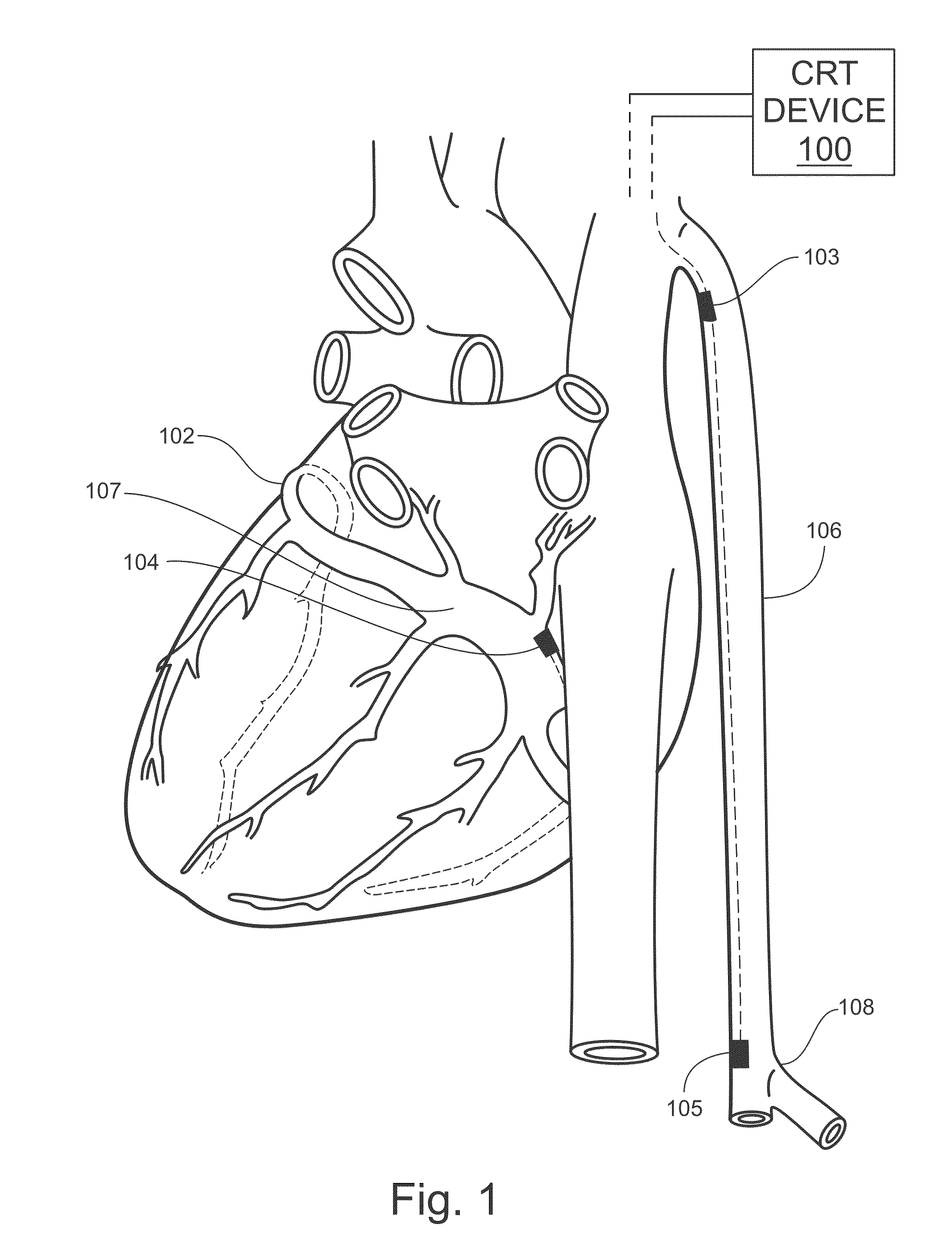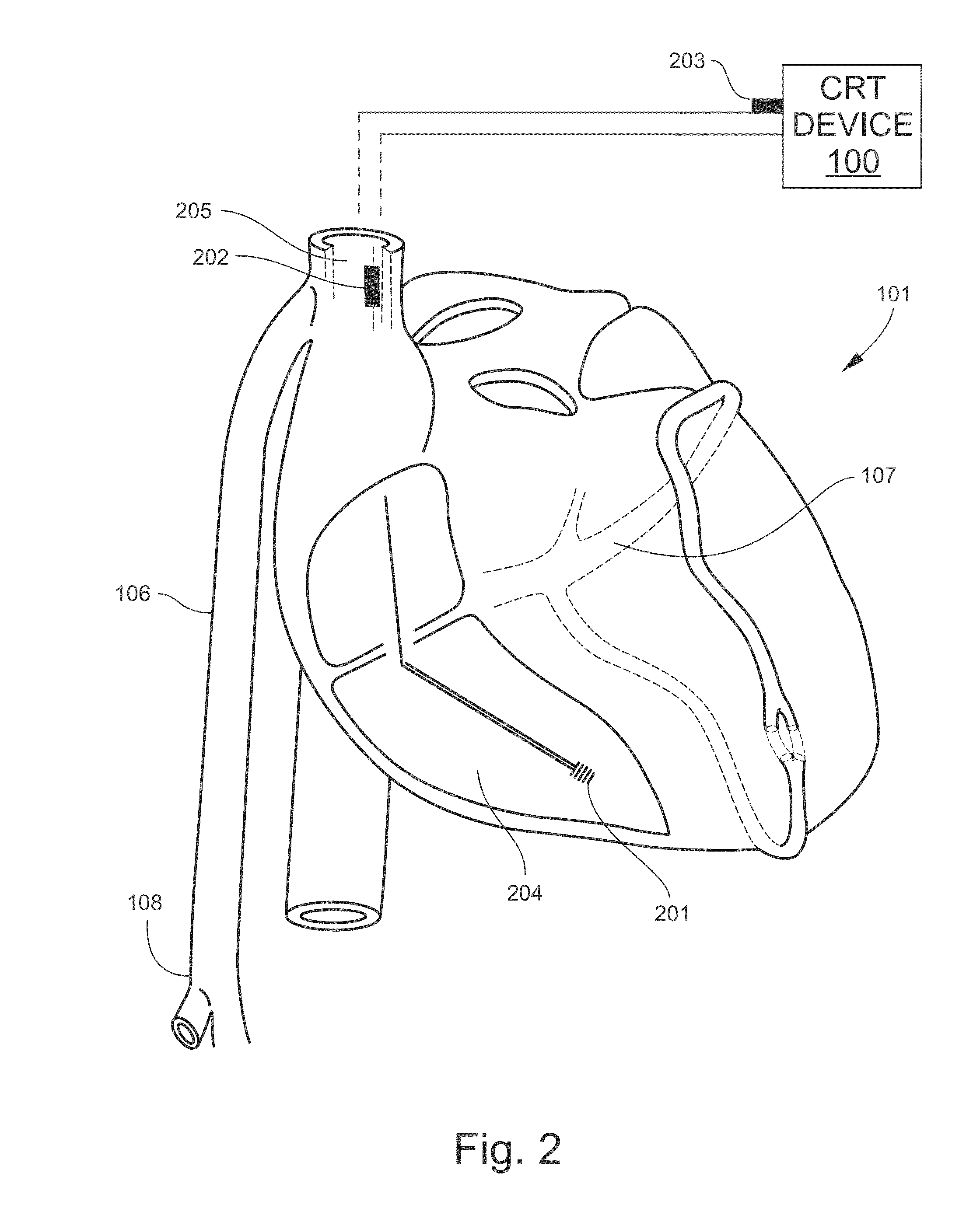Systems and methods for optimizing cardiac resynchronization therapy (CRT)
a cardiac resynchronization and optimization technology, applied in the field of systems and methods for optimizing cardiac resynchronization therapy, can solve the problems of largely driven cost, and achieve the effect of improving the risk-benefit ratio and cost-effectiveness of the procedur
- Summary
- Abstract
- Description
- Claims
- Application Information
AI Technical Summary
Benefits of technology
Problems solved by technology
Method used
Image
Examples
examples
1. Preliminary Human Study
[0060]Introduction: An example method for lead motion analysis has been studied in a total of 3 patients with NYHA class III HF. Patient 1 had baseline right bundle-branch block, while patients 2 and 3 had baseline left bundle-branch block.
[0061]Methods: After placing external Ensite-NAVX reference electrodes (St. Jude Medical, Austin Tex.) a Quartet quadripolar left ventricular lead (St. Jude Medical, Minneapolis, Minn.) was positioned in the lateral branch of the coronary sinus, a Durata (St. Jude Medical, Minneapolis, Minn.) bipolar right ventricular lead was positioned in the right ventricular apex, and a Tendril (St. Jude Medical, Minneapolis, Minn.) lead was positioned in the right atrial appendage. The leads were connected to the Ensite-NAVX (St. Jude Medical, Austin, Tex.) mapping system. Pacing was delivered through an external stimulator (Micropace EP Inc., Santa Ana, Calif.). Lead motion analysis was performed during sinus rhythm, pacing from the...
PUM
 Login to View More
Login to View More Abstract
Description
Claims
Application Information
 Login to View More
Login to View More - R&D
- Intellectual Property
- Life Sciences
- Materials
- Tech Scout
- Unparalleled Data Quality
- Higher Quality Content
- 60% Fewer Hallucinations
Browse by: Latest US Patents, China's latest patents, Technical Efficacy Thesaurus, Application Domain, Technology Topic, Popular Technical Reports.
© 2025 PatSnap. All rights reserved.Legal|Privacy policy|Modern Slavery Act Transparency Statement|Sitemap|About US| Contact US: help@patsnap.com



